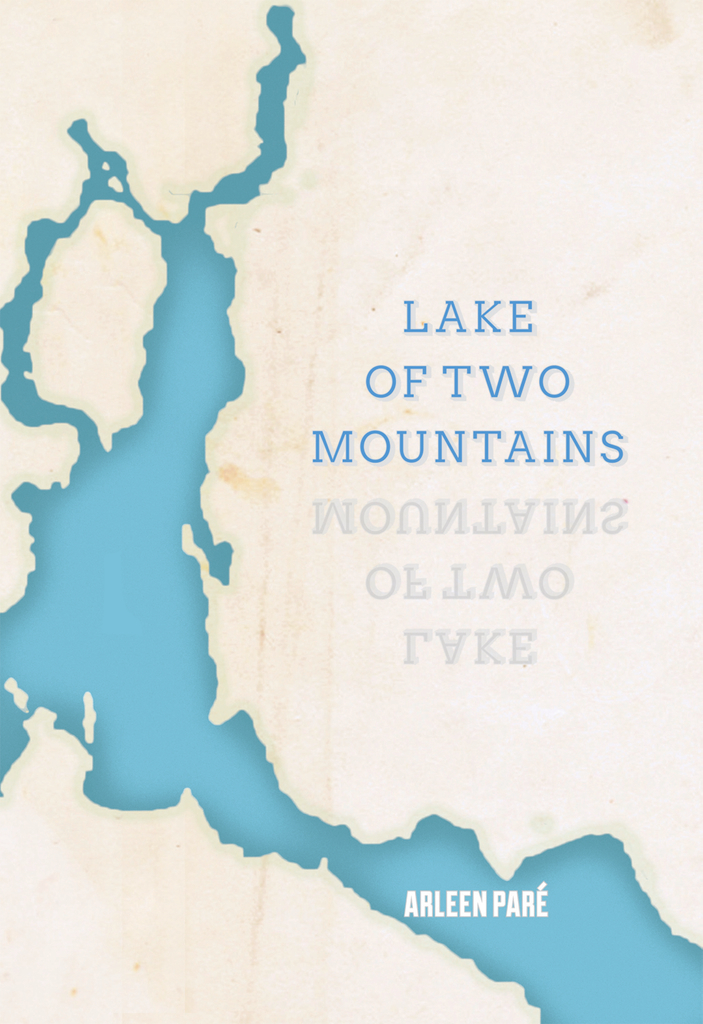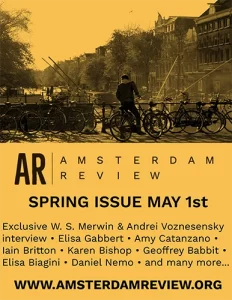Lake of Two Mountains
What is this life all about? That type of philosophical query may seem an unlikely undercurrent to a book of poems ostensibly focused on a writer’s experience of a specific place. Yet, when read as a whole, the direct, lyrical poems in Arleen Paré’s Lake of Two Mountains, weave a wide web of overlapping stories and impressions that casts a deep sense of wonder on the nature of particularity. What is this life all about? That type of philosophical query may seem an unlikely undercurrent to a book of poems ostensibly focused on a writer’s experience of a specific place. Yet, when read as a whole, the direct, lyrical poems in Arleen Paré’s Lake of Two Mountains, weave a wide web of overlapping stories and impressions that casts a deep sense of wonder on the nature of particularity.
Situated in an area of central Canada between Ottawa and the St. Lawrence Rivers, these poems are rich with multiple contexts: memories of childhood summers, nature’s shifts in time, the nearby lives of monks and native people. The interplay between changing land and changing lives—of lives keeping a foothold in their time and their place in all their various ways—creates an experience that reflects the range of existence.
The first poem, “Distance Closing In,” begins, “flint-dark far-off / sky on the move across the lake.” The language conveys the urgency of stormy weather and how it strips a sense of time from the landscape: “closer future / flinging itself backwards / water now stippling thin waterskin.” The book has several poems early on that situate this location in nature and in a lake-centered memory of a past before human lives. “Becoming Lake” does this with some humorous wording at its beginning: “Start early. Pleistocene / 3 a.m. . . . .” Imagery of ice sheets covering the land and changing it slowly is met by the poet’s subtle metaphorical skill in these lines from “Under Influence”: “The past develops under water, / film fixing invisible forms. . .,” “The past arranges itself / under duress.” That “duress,” that sense of pressure creating and changing the literal and emotional landscape of life, is a theme that underlies this entire collection.
The slippery quality of time and how there can be disjunctions in memories of a place is brought to life in a vivid long poem called “Map of the Lake.” The childlike voice narrating the poem is giving us instructions on what to include in a drawing of this region, such as two ferries, a church in the town called Oka, scalloped edges for the lake so that the shape resembles a cloud. I enjoyed how authoritatively these lines convey the time/space mental confusion they allude to:
Colour the lake’s two eponymous mountains.
The sun used to slip behind them at eight, but who knows
what time it is now. This is a map;
maps change all the time.
Several poems throughout Lake of Two Mountains return to scenes from childhood summers that Paré spent at a summer home on the lake’s shore. Sometimes the lake is in the background and sometimes in the foreground as she portrays scenes with family members or herself. These poems are full of stark observations, such as how one time, in the poem “Treading Water”: “Your forearms, held over-long in the water, / start to dissolve, / turn into lake.”
Lake of Two Mountains has multiple individual poems, and specific lines within those poems, that really strike a chord, but what really impressed me is the way this book’s strongest effect was achieved by how it works as a whole. The sieve of memory is shaking out a wide web of associations that a particular place can trigger. One poem early in the collection called “Figments” directly presents the “web” that is behind the author’s intentions. Paré begins with a line that deliciously compresses science and religion, “God and molecules, nuclei and neutrinos: / you’re told certain uncertain things.” The compression continues with: “If you could, you’d live below theory, subatomic / notions floating unseen. Helixed webs, / beyond life’s unparseable range.” These “helixed webs” are at the heart of this collection with its sense of multiple stories and contexts within one place; yet the poems successfully resist the urge to draw tight connecting lines for readers.
There are poems written from the perspective of the poet’s childhood impressions and adult insights into the changing lives of monks in a nearby monastery (which we learn in a later poem is “now a shop, old photographs on tourist display”), and of Native people on a reservation that was the scene of a local uprising in the early 1990’s. The “monastic life” poems are prose poems that have an embedded quality: they feel like an effort to really imagine how that world felt, looked, and worked from the inside. In “Monastic Life 5,” Paré writes, “It is liturgical. Worship, proper times of the day. One time, then / another, in order, each time reaching. When one ends, thoughts of / the next arise. Quotidian. Before collecting the milk, Matins. . . .” How time is lived and experienced in this place is one consistent aspect explored here. In “Whose Lake?” Paré recounts the multiple voices she can hear with a claim to the lake: “Our lake say the Mohawks / and the lake of our dead.” This connection is built from living and dying there “if not from time immemorial / at least almost as long.” Like a poet’s version of a linked short story collection (Sherwood Anderson’s Winesburg, Ohio comes to mind), Arleen Paré has created a work with a diversity of lives bordering each other in Lake of Two Mountains.
I was impressed by the wide ecology at play in these poems that skip between natural, personal, and collective histories. A line from a prose poem called “Monastic Lake” toward the collection’s end captures how “the lake unfolds,” and “Anything that passes through is transformed.” The poet’s focus on this one particular place is layered with questions under its surface, such as what is here? what is left? what happens when stories rub against each other? These poems suggest that one transformation is created over time by how linkages stitch a place together in our minds.





